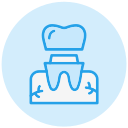



Booking
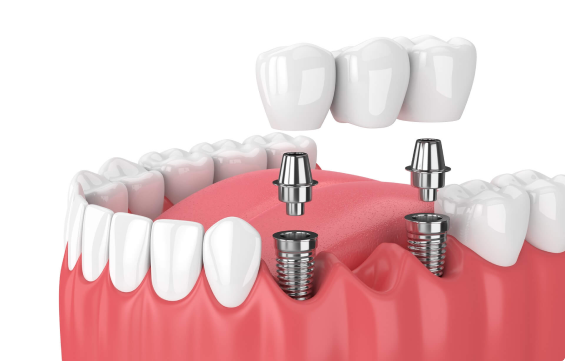
What is Dental Implant?
Dental implant is a modern tooth restoration method that replaces missing teeth by placing an implant post (usually made of titanium) into the jawbone.
Advantages of implants:
- Durable and feels like natural teeth
- Does not affect adjacent teeth
- Prevents jawbone resorption
- Can last for many years with proper care
Thus, the implant serves as an artificial tooth root that replaces the natural tooth root, and then the doctor will attach a dental crown to perfectly replace the missing tooth.
Structure of a Dental Implant:
A dental implant is a modern dental solution used to effectively and aesthetically replace missing teeth. The structure of a dental implant consists of three main parts:
1. Implant Post:
The implant: It is directly implanted into the jawbone, serving as the root of the natural tooth.
- Material: Typically made of titanium, a biocompatible metal that does not cause irritation and has a high ability to integrate with the jawbone.
- Shape: It has a cylindrical or tapered shape, resembling a tiny screw, which helps it anchor securely in the jawbone.
2. Abutment:
Abutment: This is the connector between the implant post and the dental crown (like the body of the tooth).
- Function: It helps transmit chewing forces from the dental crown to the implant post and jawbone.
- Material: Usually made of titanium or precious metal alloys.
3. Dental Crown:
- Visible part: This is the external part of the dental implant, shaped and colored to resemble natural teeth.
- Material: Typically made of porcelain or zirconia, offering high aesthetics and durability.
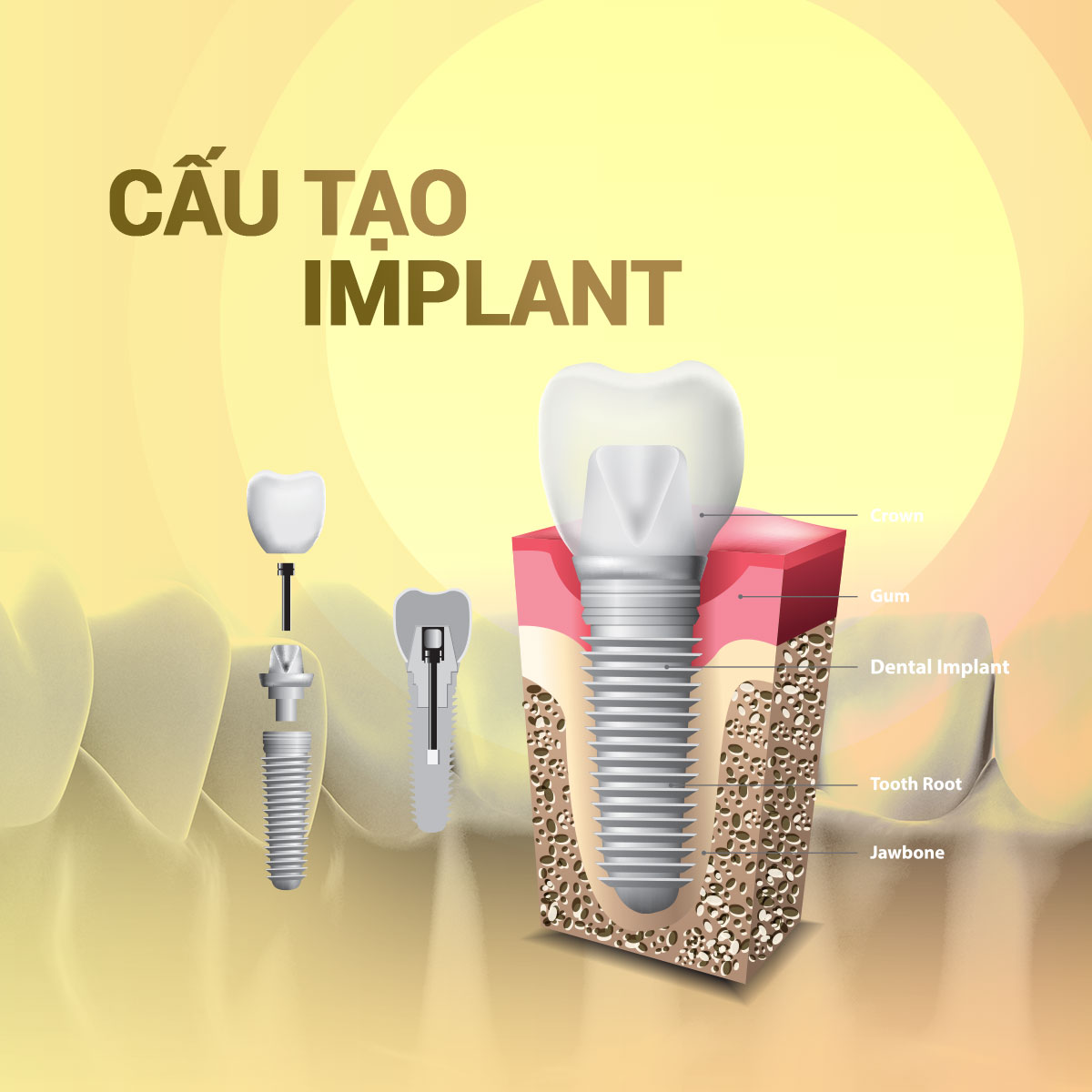
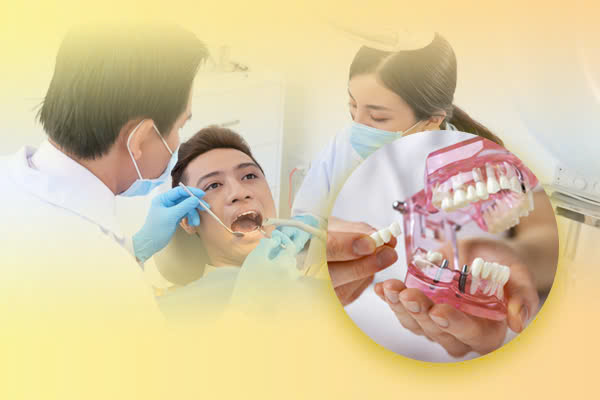
Who Should Choose the Dental Implant Method?
The dental implant method will be recommended by dentists for individuals with missing teeth in the following cases:

Individuals with missing teeth who want to have fixed teeth without wanting to grind down their natural teeth.

Individuals with missing teeth who do not want to use removable dentures, especially when the remaining teeth in the jaw are not strong enough to support a dental bridge—particularly in cases of multiple tooth loss.

Individuals who need dentures but want to preserve bone and prevent jawbone resorption in the area of the missing teeth.
Notes When Getting an Implant
There are some relative contraindications!
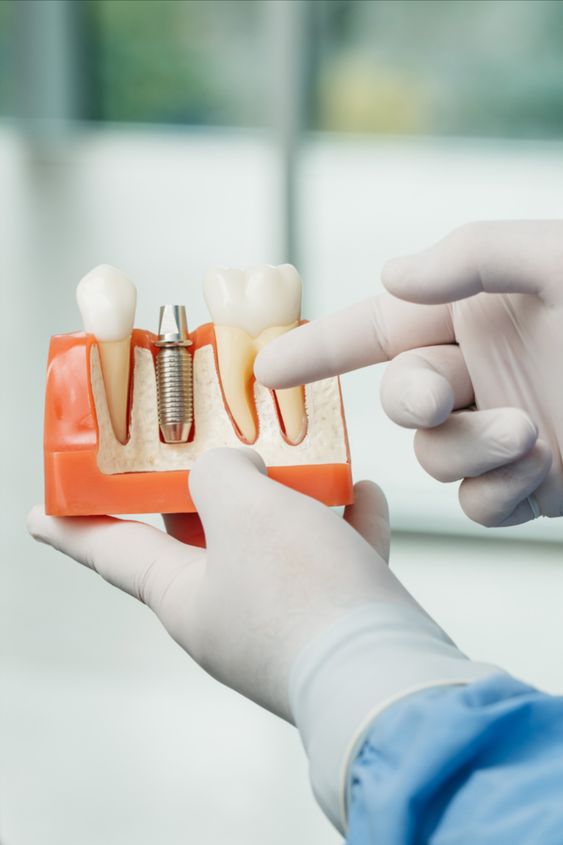
- Unstable diabetes
- Severe cardiovascular diseases
- Coagulation disorders
- Jawbone that has not fully developed (typically in children and adolescents)
- Severe jawbone deficiency that cannot or should not be grafted
- Heavy smoking
- Alcohol addiction
- Currently undergoing radiation therapy in the head and neck area
- Have previously undergone radiation therapy in the jawbone area
- Severe untreated periodontal disease
- Acute infection in the oral cavity
- Currently pregnant
- Severe osteoporosis
- Severe and uncontrolled teeth grinding (bruxism)
Dental implants are a modern method that effectively replaces missing tooth roots, meeting aesthetic needs while ensuring chewing function similar to natural teeth, allowing individuals with tooth loss to restore both their smile aesthetics and quality of life.
However, dental implant placement is a relatively complex procedure that requires highly specialized doctors, so it is essential to seek consultation and perform the procedure at reputable dental clinics with qualified professionals.
Steps for Dental Implant Placement
Dental implant placement is a complex process that offers high effectiveness in restoring missing teeth. Below are the basic steps involved in the implant placement procedure:
1. Examination and Consultation:
- Oral condition assessment: The doctor will conduct a comprehensive examination of your oral health, including X-rays to evaluate jawbone density and determine the appropriate implant placement location.
- Treatment planning: Based on the examination results, the doctor will advise you on the suitable type of implant, the number of implants needed, treatment duration, and costs.
2. Oral Hygiene/Treatment:
- Oral cleaning: Before proceeding with the implant, you need to thoroughly clean your mouth to remove plaque and tartar.
- Treatment of oral diseases: If you have any oral health issues such as gum disease or cavities, these need to be treated before the implant placement.
3. Implant Placement:
- Implant placement: The titanium implant post will be surgically placed into the prepared hole.
- Wound closure: After placing the implant, the doctor will stitch the wound closed.
4. Attaching the Dental Crown:
- After integration period: After about 2-3 months, when the implant has fully integrated with the jawbone, the doctor will proceed to attach the abutment and the dental crown on top.
Note:
- Follow-up and care: You need to have regular check-ups for the doctor to monitor the healing process and make adjustments if necessary.
- Post-operative care: You must follow the doctor’s instructions on oral care after the implant to ensure the implant’s longevity and durability.

Duration of Dental Implant Placement
Depending on whether it is a single implant or a full-arch implant, the total treatment time will vary. However, the time to place the implant post into the jawbone is relatively quick, taking only 20 to 30 minutes per post. After that, you will need to wait approximately 6 weeks for the implant post to biologically integrate before placing the dental crown on top.
However, when performing full-arch implants at Wee Dental, you can receive an immediate dental crown on the implant (without needing temporary teeth).
Typically, the dental implant process consists of 2 main phases:
- Phase 1: Implant Placement: This phase usually takes about 30 to 60 minutes, depending on the number of implants needed. After placement, you will need to wait 3 to 6 months for the implant to fully integrate with the jawbone.
- Phase 2: Crown Attachment: Once the implant post has integrated securely, the doctor will take impressions to create the dental crown. This process typically takes about 1 to 2 weeks.
Experience Implant Dental Services at Wee Dental
Rediscover the confidence of a beautiful smile and the ability to chew just like natural teeth.
Important Considerations:
Before and After Dental Implant Placement
Below are some tips from the doctors at Wee Dental to help you prepare mentally and emotionally for the dental implant process.
Before Treatment

Choose a reputable dental clinic for implant placement to ensure that the treatment process is safe and maximizes effectiveness.

You should take time to rest and maintain a calm mindset, limiting stress.

Take careful care of your health; avoid alcohol and smoking to prevent negative effects on the surgical process.
After Treatment

After the implant post is placed, the customer can bite down on a cotton ball to control bleeding, apply a cold compress on the outside of the cheek to significantly reduce pain, and only use pain relief medication when prescribed by the doctor.

After bone grafting or sinus lift, the customer should limit intense physical activity and prioritize soft foods, as well as follow up according to the doctor’s scheduled appointments.

After placing the ceramic crown, the customer should maintain the habit of brushing their teeth at least twice a day, along with using a water flosser or dental floss to keep their mouth clean.
WEE Dental - Caring with dedication - Elevating value.
- Address: 127 Luong Dinh Cua, Quarter 3, An Khanh Ward, District 2, Thu Duc City, Ho Chi Minh City.
- Hotline: 0362 790 924
- Website: weedental.vn
- Fanpage: https://www.facebook.com/weedental.fanpage/

